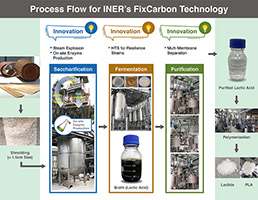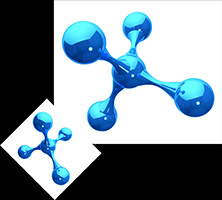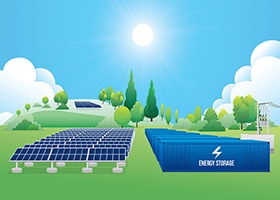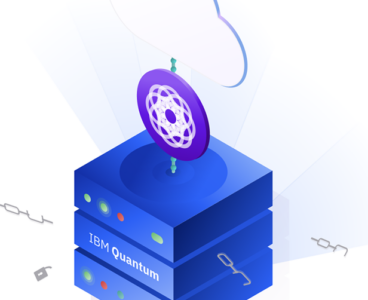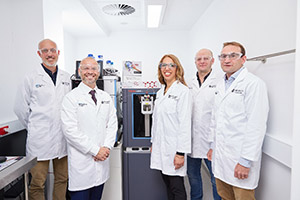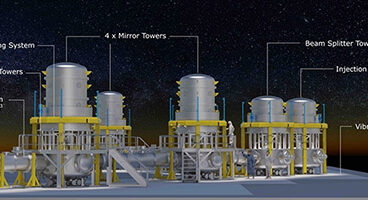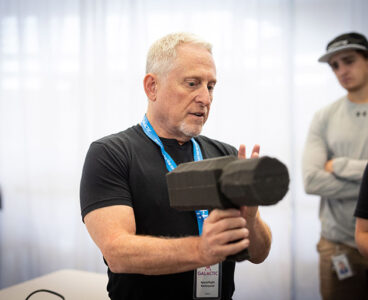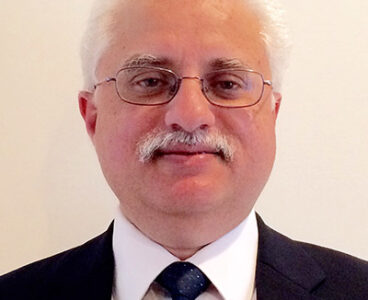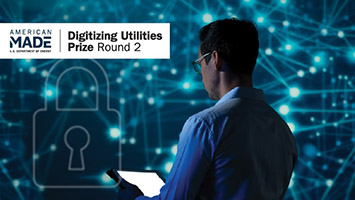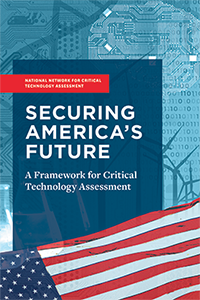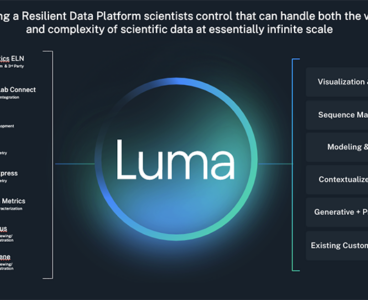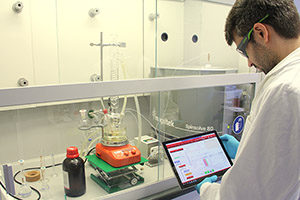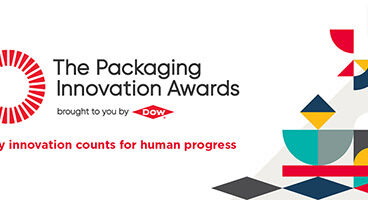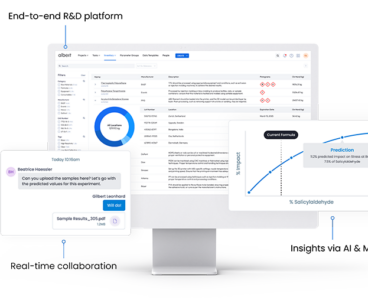Developer: Institute of Nuclear Energy Research (INER), Atomic Energy Council, Executive Yuan, ROC (Taiwan) Co-Developer: NZ Bio Forestry, Inspira Applied Bio Solutions Co. FixCarbon technology revolutionizes the use of forestry waste and enables large-scale bio-plastic production using leftover Pinus Radiata wood processing and forestry waste as feedstock. The technology uses an acid-catalyzed steam explosion as…
MaterialsZone partners with Kafrit Group, enhancing products and customer experience
MaterialsZone, a materials Informatics platform for manufacturers’ R&D teams, and Kafrit Group, a global masterbatches and compounds producer, announced its long-term commercial agreement enabling Kafrit Group to better use its data to develop improved products and provide an unparalleled customer experience to its clients. With a crowded, competitive landscape, constantly changing customer demands, supply chain…
MAVEN, online glucose and lactate-monitoring device, is R&D 100 winner of the day
908 Devices is developing devices for scientists to enhance their process understanding and accelerate workflows. For cell culture and fermentation processes, the company’s online MAVEN device precisely measures glucose and lactate while preserving sample integrity. It eliminates manual sampling from a bioreactor with its novel aseptic sampling approach, which saves operator time, reduces contamination risk,…
Nokia unveils plans for new state-of-the-art R&D facility in New Jersey tech hub
Nokia has announced plans to relocate its campus in Murray Hill, New Jersey, by 2028 to a new state-of-the-art R&D facility in the burgeoning innovation and technology hub in New Brunswick, New Jersey. The new leading-edge R&D facility will propel Nokia Bell Labs to adapt and evolve to remain at the forefront of cutting-edge technology…
Thermo Fisher Scientific sets 2030 renewable goal with solar developer ib vogt
Thermo Fisher Scientific Inc. has announced a 15-year virtual power purchasing agreement (VPPA) with international solar developer ib vogt. Thermo Fisher’s 91-megawatt portion of the Serbal solar project will deliver approximately 192,000 megawatt hours of renewable electricity annually. Eurofins Scientific, a bioanalytical testing company, collaborated in the aggregated deal for a 36-megawatt portion of the…
CHIPS R&D Chiplets Interfaces Technical Standards Workshop
The CHIPS Research and Development Office’s Chiplets Interfaces Technical Standards Workshop will be a hybrid in-person and virtual event from 8:30 a.m. to 5:30 p.m. EST, December 12, 2023, and 8:30 am to 12:30 pm December 13, 2023. The in-person event will take place at the NIST’s National Cybersecurity Center of Excellence (NCCoE) in Rockville,…
Q-CTRL integrates their error suppression technology into IBM Quantum services
Q-CTRL, a developer of useful quantum technologies through quantum control infrastructure software, announces that its Q-CTRL Embedded software has been integrated as an option with IBM Quantum’s Pay-As-You-Go Plan to deliver advancements in quantum computing utility and performance. This integration represents the first time a third-party independent software vendor’s technology solution will be available for…
U.S. DOE announces intent to issue $4.8M in secure communications development funding
The U.S. Department of Energy (DOE) announced a notice of intent (NOI) for the Office of Electricity to issue a $4.8 million funding opportunity announcement (FOA). This FOA aims to support the development and demonstration of technologies, tools, or systems that enable secure data and control messaging between grid edge infrastructure and distribution system operators.…
Amazon to offer free AI training to offset demand, in this week’s R&D Power Index
The R&D World Index (RDWI) for the week ending November 24, 2023, closed at 3,096.05 for the 25 companies in the RDWI. The Index was up 0.96% (or 29.40 basis points). Twenty-one RDWI members gained value last week from 0.12% (Merck & Co.) to 3.40% (Novartis). Four RDWI members lost value last week from -1.30%…
ACM Research’s new facility contributes to PNW’s growing semiconductor industry
ACM Research, a supplier of wafer processing solutions for semiconductor and advanced wafer-level packaging (WLP) applications, announces the grand opening of its new multi-use facility in Hillsboro, Oregon, on November 28. This is a first-of-its-kind property within North America for ACM Research, and its 11,000 ft2 will feature offices, warehouse space, and a dedicated cleanroom/demonstration…
New GraphPad Prism offers open file format, plus collaboration, integration capabilities
Dotmatics, an R&D scientific software company connecting science, data, and decision-making, announces a major new release of its popular GraphPad Prism application, the world’s leading analysis and graphing solution for scientific research. Prism 10 introduces several features including a new, more open file format (.prism), a variety of core graphing and analysis improvements, and a…
Monash harnesses new frontier in technology to propel promising local drug discoveries
The Monash Institute of Pharmaceutical Sciences (MIPS) has unveiled a brand new instrument — the Thermo Scientific Orbitrap Astral Mass Spectrometer (MS) — which will play a key role in enabling the team to identify promising drug targets for academia and industry efficiently. The new Orbitrap Astral MS, located at MIPS in Parkville, is the…
BUMAX chosen for the Einstein Telescope project
Swedish specialist fastener manufacturer BUMAX has been selected to supply premium fasteners to ETpathfinder, an R&D facility at Maastricht University for testing and prototyping innovative concepts and enabling new technologies for the Einstein Telescope (ET). The Einstein Telescope is a next-generation underground gravitational wave observatory. The ET is being developed to be 100 times more sensitive…
SwRI’s Dr. Alan Stern conducts space research aboard Virgin Galactic’s VSS Unity
Dr. Alan Stern, a planetary scientist and associate vice president of Southwest Research Institute’s Space Sector, flew on Nov. 2 aboard the Virgin Galactic commercial spaceship Unity on a suborbital space mission. During the roughly 60-minute mission, first mated to its carrier aircraft VMS Eve, then horizontally launched into space, Stern tested equipment and trained…
Meet Bharat Indu Chaudhary, R&D 100 Researcher of the Year
Before developing groundbreaking polymers at Dow, applying for patents, publishing papers, giving presentations, and mentoring numerous fellow employees and university students, Bharat Chaudhary was a student at the University of Benin in Nigeria, where his interest in R&D began. “I did a research dissertation as part of obtaining a B. Eng. degree in Chemical Engineering.…
Latina-led startup announces strong study results for AI-assisted technology for COPD
Samay, the maker of a patented, AI-assisted wearable device and platform to monitor lung function, announces impressive results of its trial with more than 100 subjects. Designed for COPD, the wearable device (called “Sylvee”) continuously measures air trapping and other measures of respiratory function in patients at home. This study was conducted in partnership with…
U.S. DOE launches digitizing utilities prize for grid reliability and resilience solutions
The U.S. Department of Energy’s (DOE) Office of Electricity (OE) has launched the $1.85 million Digitizing Utilities Prize Round 2. This competition aims to connect electric utilities with interdisciplinary teams of software developers and data experts to transform digital systems and data analytics for utilities in the energy sector. This round will also award prizes…
New report identifies pathways to strengthen U.S. competitiveness in key technology areas
A network of universities funded by the U.S. National Science Foundation completed a yearlong, nearly $4 million pilot effort with the release of a report – Securing America’s Future: A Framework for Critical Technology Assessment – on how to enable timely situational awareness of global technology and production capabilities, rigorous methods to quantify the potential value…
Proscia achieves ISO 27001 security certification
Proscia, a provider of digital and computational pathology solutions, has earned ISO 27001 certification. This certification demonstrates the company’s compliance with one of the best-known information security management standards, giving customers added confidence in its products. ISO 27001 sets forth requirements for establishing, implementing, maintaining, and continually improving an information security management system (ISMS). Comprehensive…
New Dotmatics Luma scientific data platform helps enable AI and ML in life sciences
Dotmatics, an R&D scientific software company connecting science, data, and decision-making, announces the launch of Dotmatics Luma, a revolutionary new scientific data platform that helps scientists and administrators in life sciences unify and analyze large volumes of data for better decision-making. Luma provides customers an out-of-the-box, low-code SaaS platform that flexibly aggregates all relevant data…
Magritek opens up benchtop NMR to new reaction monitoring applications
Magritek has made benchtop NMR suitable for the rapid identification and quantitation of analytes during chemical reactions, in batch and continuous flow processes. This significant advancement in NMR has been achieved by Magritek thanks to the improved magnet performance of its Spinsolve ULTRA system, which enables effective and robust solvent suppression. Now, scientists can run…
R&D tax guidance is coming from the IRS, in this week’s R&D Power Index
The R&D World Index (RDWI) for the week ending October 13, 2023, closed at 3,023.60 for the 25 companies in the RDWI. The Index was up 1.38% (or 41.16 basis points). Eleven of the 25 RDWI members gained value last week from 0.10% (Novartis) to 7.78% (Eli Lilly & Co.). Fourteen of the 25 RDWI…
DoD awards $9M to create research institute at the VCU College of Engineering
The Department of Defense awarded a $9 million grant to the Virginia Commonwealth University College of Engineering for research and development of electro-optics, infrared, radio frequency, and edge security technologies. These areas are pivotal in managing the electromagnetic spectrum and ensuring network security. Electrical and computer engineering professors Nibir K. Dhar, Ph.D.; Erdem Topsakal, Ph.D.;…
Dow Packaging Innovation Awards returns for its 2023/2024 edition
Dow is back with its 2023/2024 edition of its Packaging Innovation Awards (PIA), the packaging industry’s premier accolade for recognizing breakthroughs in technological advancement, sustainability, and enhanced user experience. As one of the industry’s longest-running independently judged awards, the global program — now into its 35th edition — will be held in Asia-Pacific this year…
Albert Invent’s Worksheet brings R&D data into a single, connected source
“We are on a relentless pursuit to build the best formulating and product design tool in the market, and with this Worksheet release — a key component of Albert’s end-to-end R&D solution – our vision is quickly becoming a reality. The evolution of the Albert Worksheet is the culmination of 1000s of hours of exemplary…

